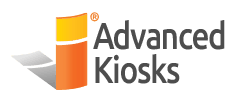How to Limit Project Risk Using Phase Zero
All software projects start with the intent of being finished on time and within budget, but the sad truth is that this outcome happens much less than anyone would care to see. In a 2017 report by the Project Management Institute (PMI), while only 14% of projects fail outright, many finish without meeting their goals, going over budget, or are just plain late.
PMI further broke down the common causes for project failure. At the top of the list, a staggering 39% of IT projects suffered from “inaccurate requirements,” meaning the project’s scope was not handled correctly. In addition, a quarter of all the projects suffered from “undefined risks.” Managing project risk is critical to a successful IT project. Here we’ll explain how to limit project risk using Phase Zero to increase the probability of success for new projects.
What is Phase Zero, and Why Does it Matter?
Most projects start with a list of known problems to solve and requirements to meet. It is often the problems that we didn’t even know existed that cause a project to struggle, though, at Advanced Kiosks, we recommend spending a bit of time at the beginning of the project to bring these unknown problems to light to limit project risk.
To do this, we propose completing a Phase Zero to get all the requirements listed and understood. During this phase, we collaborate with our client on the features, functionality, and user experience of the intended system to generate a well-defined set of requirements for the kiosk software. Businesses must be aware of as many different types of problems as possible, so they can work to find solutions and limit project risk.
Phase Zero Business Meeting
How to Use Phase Zero to Limit Project Risk
A Project Phase Zero typically runs through the following stages:
- Discovery: meetings with stakeholders to get all the known information and requirements on the table
- Understanding: extrapolate the additional unknowns and capture a complete set of requirements
- Preliminary Design: produce early workflows and example screens to show possible design directions
- Prototyping: create any needed physical or digital prototypes to ensure feasibility
The crucial part in all this is the early discovery time. Getting input from the major project stakeholders can go a long way towards limiting the risks of plague projects. Representatives from IT, sales, marketing, executive management, and even the eventual end-users should all get a voice in the product.
After the discovery sessions, a greater understanding of the full scope of the project forms, and you are still working within the cone of uncertainty. Still, this bit of incremental spending for the Phase Zero effort can go a long way towards limiting project risk.
Why a Phase Zero is Right For You
If you are considering undertaking a large technological project but are not sure of the scope and cost, the Phase Zero approach should be precious. Documented stakeholder inputs and solid project requirements will likely be the deciding factors on whether a software project is on time and within budget.
An important thing to remember is that a Phase Zero effort is not a long commitment. Depending on the size and complexity of the project, it could be anywhere from a few days to a couple of weeks of total time and effort.
At Advanced Kiosks, we often recommend this approach for complex projects. We have found from years of experience that establishing this solid foundation can make a world of difference to limit project risk. If you are thinking about adding self-service kiosks to your organization and want to know how best to go about doing so, contact our technical sales team for a brief consultation.









